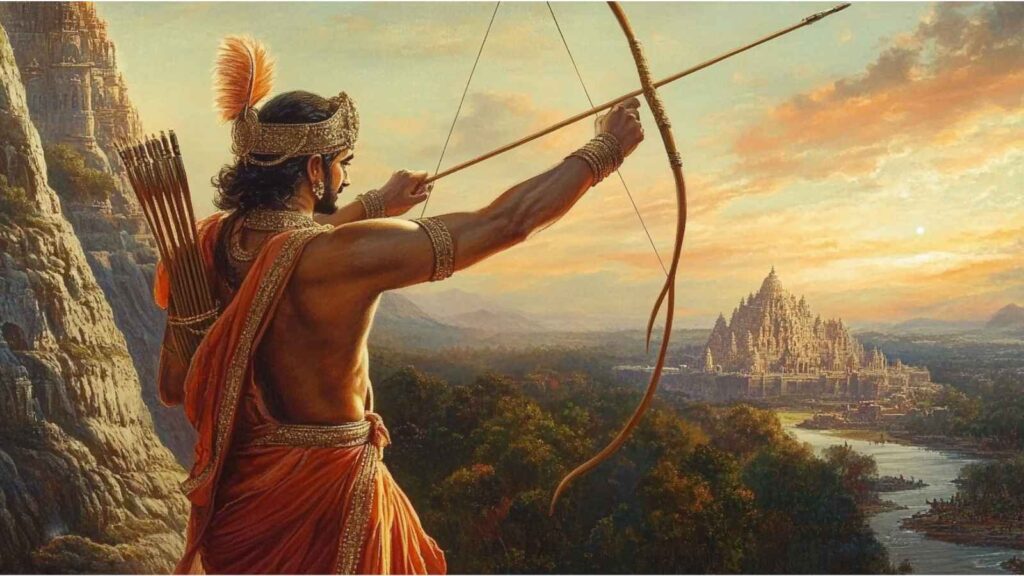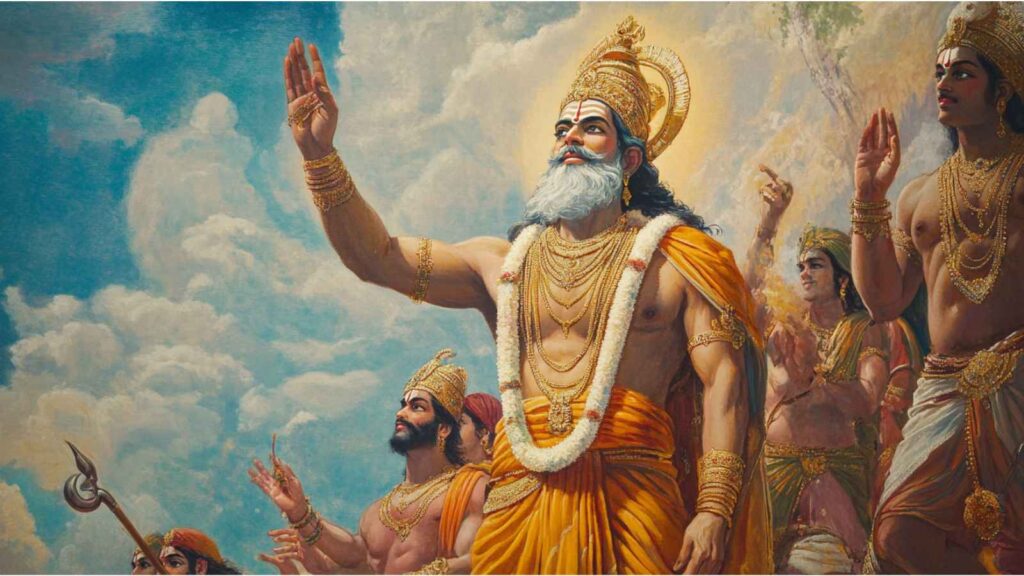Ramayana’s Journey: Exploring Valmiki’s Original Text Versus Later Adaptations
The Ramayana, attributed to the sage Valmiki, is one of the two most important epics of Hindu literature, the other being the Mahabharata. As one of the foundational scriptures of Hinduism, the Ramayana is revered not only for its narrative of the life of Lord Rama, but also for its philosophical teachings, ethical dilemmas, and spiritual lessons.
Read More About sacred texts
While Valmiki’s Ramayana is the original and most authoritative text, the epic has been adapted and retold in many versions over time, particularly in different regions of India and Southeast Asia. These adaptations vary in narrative style, cultural context, and thematic emphasis, yet they all serve to keep the core message of the Ramayana alive in diverse forms. In this article, we will explore the original Ramayana by Valmiki and examine how it compares with later adaptations, understanding the reasons behind these changes and their impact on the broader Hindu tradition.
Introduction to the Ramayana

The Ramayana is one of the two great epics of Hinduism, alongside the Mahabharata. It tells the story of Lord Rama, the prince of Ayodhya, who is sent into exile and embarks on a journey to rescue his wife Sita from the demon Ravana. Along the way, Rama is joined by his brother Lakshmana, the monkey god Hanuman, and an army of monkeys to wage battle against Ravana and his forces.
The Ramayana not only narrates the events of Rama’s life and journey but also teaches deep moral, philosophical, and spiritual lessons. Through its themes of duty (dharma), honor, loyalty, and devotion, it offers guidance for leading a righteous life. Its impact is profound, influencing Hindu rituals, ethics, and the cultural imagination.
Valmiki’s version of the Ramayana, written in Sanskrit, is often considered the most authoritative and traditional version of the text. However, over time, various adaptations of the story have emerged across India, Southeast Asia, and the world, each reflecting regional interpretations, local customs, and the spiritual needs of different cultures.
Valmiki’s Original Ramayana: Structure and Themes

The original Ramayana consists of seven books (Kandas) and about 24,000 verses. It is a narrative epic that follows a clear structure of introduction, build-up, climax, and resolution. Each book or Kanda is dedicated to a specific phase of Lord Rama’s journey, highlighting key events, struggles, and teachings.
1. Bala Kanda – The Book of Childhood
The Bala Kanda introduces the birth of Rama, his early childhood, and his marriage to Sita. It sets the stage for the epic by establishing the divine nature of Rama as an incarnation of Lord Vishnu. Rama’s exile to the forest, alongside his wife Sita and his brother Lakshmana, marks the beginning of the central conflict of the story.
2. Ayodhya Kanda – The Book of Ayodhya
The Ayodhya Kanda deals with the political and personal struggles in the kingdom of Ayodhya. It recounts how Rama is unjustly exiled due to the scheming of his stepmother Kaikeyi and the manipulation of his father, King Dasharatha. Rama’s departure to the forest, the grief of the royal family, and the political implications of his exile form the crux of this Kanda.
3. Aranya Kanda – The Book of the Forest
The Aranya Kanda describes the Rama-Sita-Lakshmana trio as they enter the forest during their exile. Here, Ravana kidnaps Sita, setting in motion the quest for her rescue. This Kanda introduces Hanuman, the monkey god, and his devotion to Rama. It also depicts the first encounters with various mythical and divine beings, highlighting the cosmic forces at play.
4. Kishkindha Kanda – The Book of Kishkindha
The Kishkindha Kanda follows Rama’s search for Sita after her abduction by Ravana. This Kanda focuses on **Rama’s alliance with the monkey king Sugriva and his brother Bali. With the help of Hanuman and the monkey army, Rama prepares for the confrontation with Ravana’s forces. This Kanda emphasizes the importance of friendship, loyalty, and alliances.
5. Sundara Kanda – The Book of Beauty
The Sundara Kanda is perhaps the most celebrated part of the Ramayana. It focuses on Hanuman’s journey to Lanka to search for Sita. His devotion to Rama and his courage in the face of overwhelming odds make this Kanda a symbol of devotion and selfless service. Hanuman’s leap to Lanka and the discovery of Sita’s whereabouts is a climactic moment in the epic.
6. Yuddha Kanda – The Book of War
The Yuddha Kanda (or Lanka Kanda) describes the great battle between Rama’s forces and Ravana’s demon army. This book culminates in Rama’s victory, Ravana’s death, and the rescue of Sita. The narrative explores themes of honor, justice, and the fulfillment of dharma.
7. Uttara Kanda – The Book of the Aftermath
The final book, Uttara Kanda, deals with the aftermath of Ravana’s defeat. Rama’s return to Ayodhya and his coronation are described. However, this Kanda also delves into the moral dilemmas Rama faces with respect to Sita’s purity and her subsequent exile. The conclusion of this Kanda highlights the complexities of righteousness and the burdens of being a ruler.
Later Adaptations of the Ramayana
Over time, the Ramayana has been retold and adapted in various forms, each shaped by regional and cultural influences. Some of the most notable adaptations include:
1. The Ramcharitmanas by Tulsidas
The Ramcharitmanas is a Hindi version of the Ramayana written by Tulsidas in the 16th century. It is one of the most beloved versions of the Ramayana in North India and has deeply influenced the bhakti movement. While Tulsidas’ version closely follows Valmiki’s text, it emphasizes the devotional aspect of Lord Rama, focusing on bhakti (devotion) as the means to spiritual liberation. Tulsidas’ version also includes extensive hymns, prayers, and stories that were adapted for a largely illiterate population.
2. Kamba Ramayanam
The Kamba Ramayanam is a Tamil version of the Ramayana written by the poet Kambar in the 12th century. The Kamba Ramayanam is particularly famous for its poetic style and the emotional depth with which it portrays characters such as Sita and Hanuman. In this version, the story is sometimes presented with a more humanistic view of Rama, with emphasis placed on empathy and compassion.
3. The Ramayana in Southeast Asia
The Ramayana has also been adapted and localized in many Southeast Asian countries such as Thailand, Indonesia, Cambodia, and Myanmar. These adaptations often take the form of dance-drama performances and theatrical productions, such as the Khmer Ramayana in Cambodia and the Ramayana Ballet in Java. The Southeast Asian versions of the Ramayana may differ in their depiction of characters, but they all uphold the core values of dharma and righteousness.
4. The Ramayana in Popular Culture
In modern times, the Ramayana has been adapted in television series, movies, and literature across India and the world. These adaptations often take creative liberties, but they continue to reflect the core message of the Ramayana: the triumph of good over evil and the importance of living a righteous life. The Ramayana‘s influence on popular culture is a testament to its timeless appeal and relevance.
Ethical Dilemmas and Moral Lessons in the Ramayana
The Ramayana is not just a story of adventure and heroism; it is also a profound exploration of moral choices, ethical dilemmas, and the nature of righteous action (dharma). Some of the key moral lessons and dilemmas include:
1. The Concept of Duty and Sacrifice
The Ramayana emphasizes the importance of duty (dharma), especially as it pertains to one’s role in society. Rama’s exile is a significant example of how duty and personal sacrifice are interwoven in the epic. Rama’s willingness to accept his exile for the sake of his father’s honor showcases the importance of following one’s dharma, even when it involves personal hardship.
2. The Loyalty of Hanuman
Hanuman, the monkey god, is a model of selfless devotion and loyalty. His dedication to Lord Rama, especially in the search for Sita, teaches the importance of serving the divine with unwavering faith. Hanuman’s devotion is often regarded as the highest form of bhakti (devotion), and his character serves as an example of how devotion can lead to spiritual liberation.
3. The Complexity of Sita’s Exile
Sita’s exile in the Uttara Kanda raises significant questions about justice and the role of women in society. Despite her purity and loyalty to Rama, Sita is forced to leave her home after Rama’s subjects question her chastity. This moment highlights the tensions between public duty and personal values, and it serves as a reflection on the complex nature of justice.
Conclusion: The Enduring Impact of the Ramayana
The Ramayana is not merely a story—it is a spiritual guide that has shaped the moral and ethical framework of Hinduism for millennia. Through its profound teachings on dharma, loyalty, sacrifice, and justice, the Ramayana continues to provide moral guidance and spiritual insight. Whether in Valmiki’s original Sanskrit version or in its many adaptations across cultures, the Ramayana remains a timeless epic that continues to inspire people to live righteous and meaningful lives.


